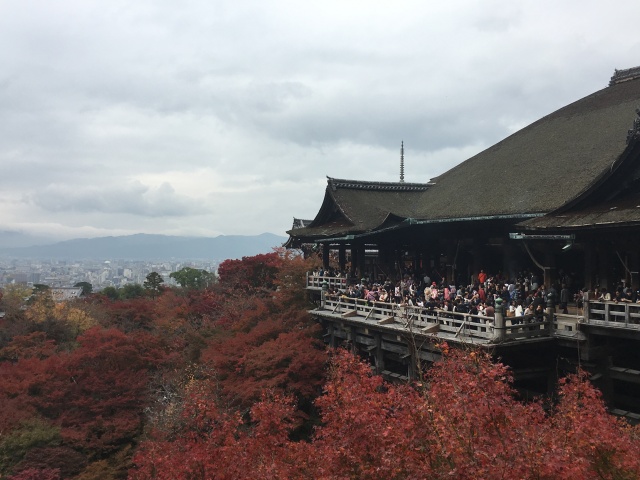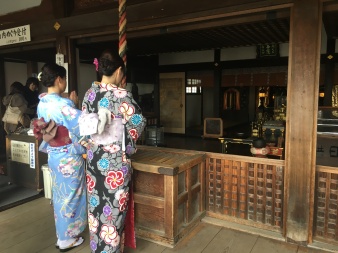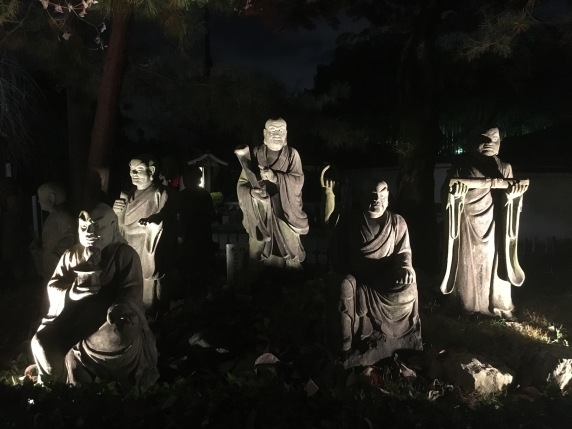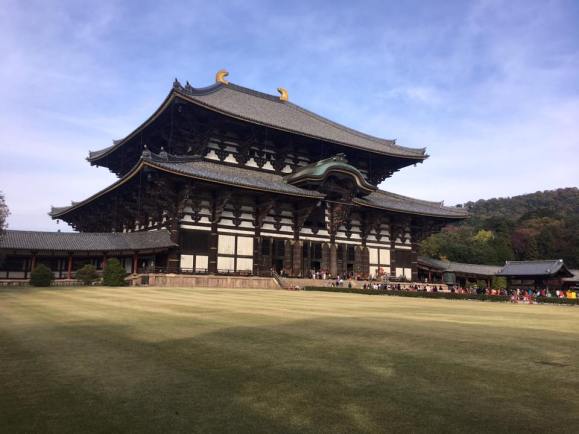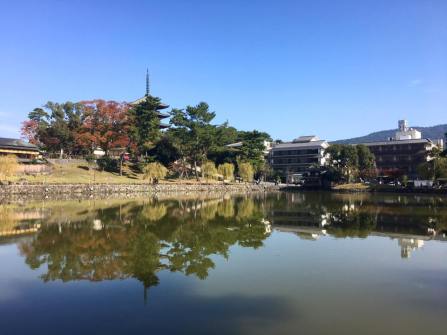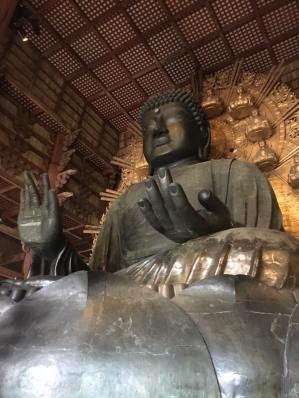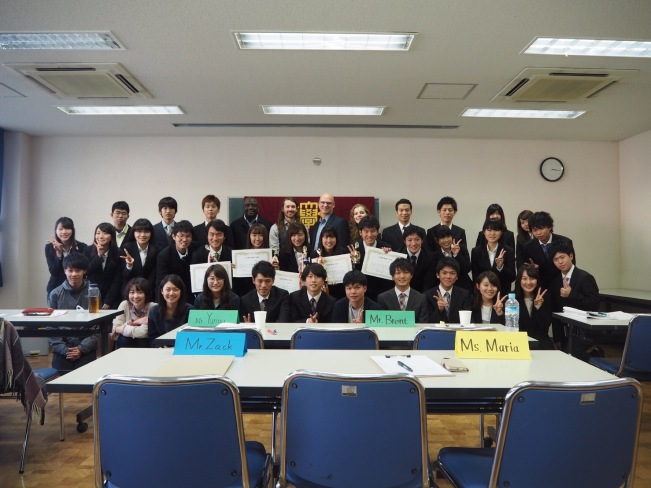
Torii gate at Miyajima (read about it below)
Last Friday we set off on a wonderful two-day trip to Hiroshima, organised by Kobe university.
There were 20 of us: most of the Oxonians, and many international and Japanese students. We were lucky to have two Hiroshima residents with us – a student and a professor. Soon after classes we got onto a surprisingly comfy inter-city bus and it took about 4 hours to get there.
I’ve heard a lot about Hiroshima at school, of course. We had to research the atomic bomb, its creation, its effects. I will never forget reading an interview with the American pilots who to this day are proud of dropping the bombs: it’s such a shockingly inhumane point of view that I simply cannot process. I’ve seen many images of the devastation; and the idea of a nuclear winter is an omnipresent background threat in the contemporary world.
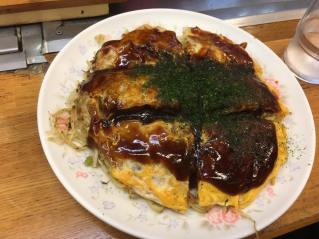
Hiroshima-style okonomiyaki is the best thing ever
The Hiroshima of today is nothing like that. I walked out of the bus into a beautiful, modern city. It’s very tidy and less busy than Kobe, but that’s about all that’s different. As we explored Hiroshima at night, it offered us many shops, restaurants, izakayas. Lots of students littered the streets in their Halloween costumes. On Saturday night we stumbled into a lovely little festival full of street food, an outdoor theatre performance, and happy families. Hiroshima of today is full of life.
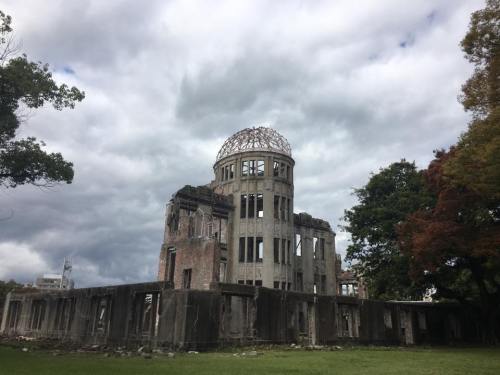
However, Saturday was also a difficult day, because we faced the details of when the bomb was dropped. Walking through the Peace Memorial Park, and seeing the building that was near the epicentre of the bomb but stayed standing, I could imagine that moment so clearly. Over and over, I read first-hand accounts of survivors (the Hibakusha). Some of them passed away soon after the bomb, some of them discovered various detrimental effects on their health years after. Stories of doctors working non-stop, children fighting for survival, families searching corpses for their loved ones. Yes, Saturday was a difficult day. It made me all the more passionate during the key bit of the trip – the workshop about Hiroshima. We were divided into groups full of international people and more young Hiroshima citizens, and in particular we discussed the recent speech given by President Obama at Hiroshima, and the fact that Japan voted against the reduction of nuclear power usage at the recent UN convention. I don’t think I’ve ever enjoyed a debate more than on that day.

New best friend (until I run of of food…)
In contrast, Sunday for me was a day of feeling intensely happy to be alive and to be exploring Japan. At that point I’ve made some lovely new friends, both international and Japanese, and we delved into exploring the little island near Hiroshima, famous for its temples: Itsukushima, more famously known as Miyajima. We went there by a 10 minute ferry ride, and it greeted us with a stunning view of a torii gate in the middle of the sea. The highlight for me was that Miyajima is bursting with curious and hungry deer who cheekily approach you and beg for food in exchange for a chance to pet them. My poor new friends had to deal with me running around trying to combine taking photos of everything with hugging every deer in sight. We also had some of the famous Momiji snacks (the deep-fried cream ones are delicious), though nothing can replace Hiroshima-style okonomiyaki in my heart.
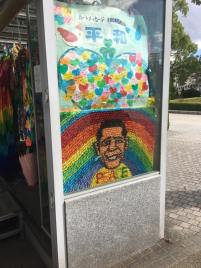
At the Sadako Memorial, this is the famous thousand of paper cranes, forming various pictures
I would love to go back to Hiroshima and Miyajima if I can. Sadly, it’s quite pricey, but I think it will be worth every penny taking my boyfriend Theo there when he comes to visit in March. After the workshop I want to show how lovely Hiroshima is to the whole world! One of the workshop organisers pointed out that whenever he talks about his hometown Hiroshima when he travels the world, people only imagine a nuclear wasteland. However, this town is so much more than that: it is a stark example of how hardworking and forgiving humanity is, how even complete devastation can be healed and re-built. I’m so grateful for the chance to have visited Hiroshima.
